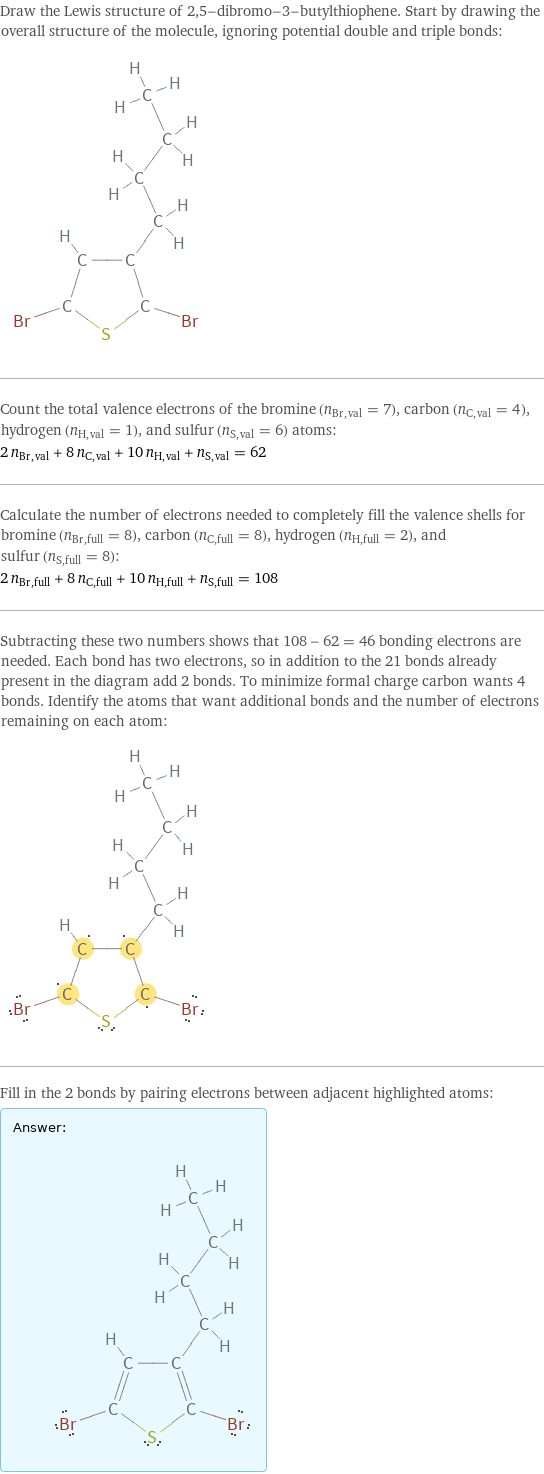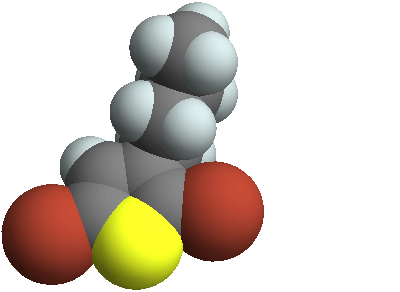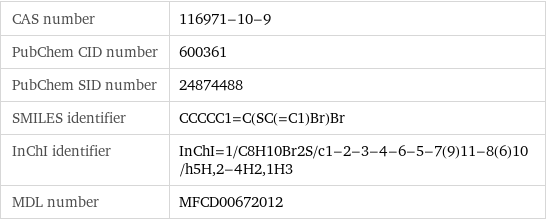Input interpretation

2, 5-dibromo-3-butylthiophene
Chemical names and formulas

formula | C_8H_10Br_2S name | 2, 5-dibromo-3-butylthiophene alternate names | 2, 5-dibromo-3-butyl-thiophene mass fractions | Br (bromine) 53.6% | C (carbon) 32.2% | H (hydrogen) 3.38% | S (sulfur) 10.8%
Lewis structure

Draw the Lewis structure of 2, 5-dibromo-3-butylthiophene. Start by drawing the overall structure of the molecule, ignoring potential double and triple bonds: Count the total valence electrons of the bromine (n_Br, val = 7), carbon (n_C, val = 4), hydrogen (n_H, val = 1), and sulfur (n_S, val = 6) atoms: 2 n_Br, val + 8 n_C, val + 10 n_H, val + n_S, val = 62 Calculate the number of electrons needed to completely fill the valence shells for bromine (n_Br, full = 8), carbon (n_C, full = 8), hydrogen (n_H, full = 2), and sulfur (n_S, full = 8): 2 n_Br, full + 8 n_C, full + 10 n_H, full + n_S, full = 108 Subtracting these two numbers shows that 108 - 62 = 46 bonding electrons are needed. Each bond has two electrons, so in addition to the 21 bonds already present in the diagram add 2 bonds. To minimize formal charge carbon wants 4 bonds. Identify the atoms that want additional bonds and the number of electrons remaining on each atom: Fill in the 2 bonds by pairing electrons between adjacent highlighted atoms: Answer: | |
3D structure

3D structure
Basic properties

molar mass | 298.04 g/mol phase | liquid (at STP) boiling point | 275.5 °C density | 1.67 g/cm^3
Units

Liquid properties (at STP)

density | 1.67 g/cm^3 refractive index | 1.574
Units

Chemical identifiers

CAS number | 116971-10-9 PubChem CID number | 600361 PubChem SID number | 24874488 SMILES identifier | CCCCC1=C(SC(=C1)Br)Br InChI identifier | InChI=1/C8H10Br2S/c1-2-3-4-6-5-7(9)11-8(6)10/h5H, 2-4H2, 1H3 MDL number | MFCD00672012